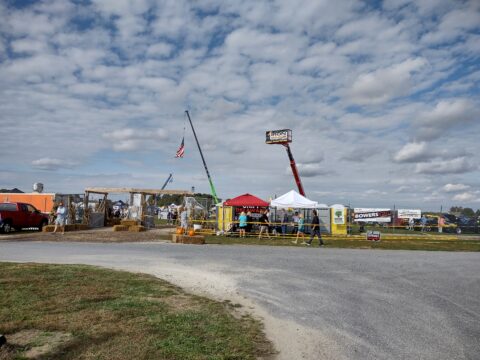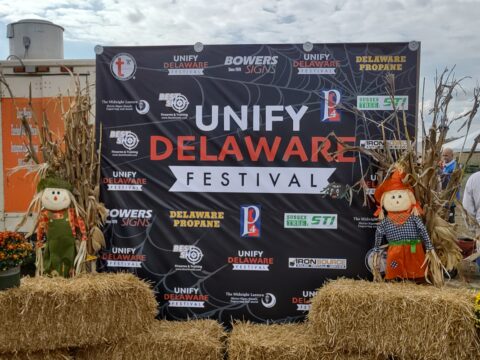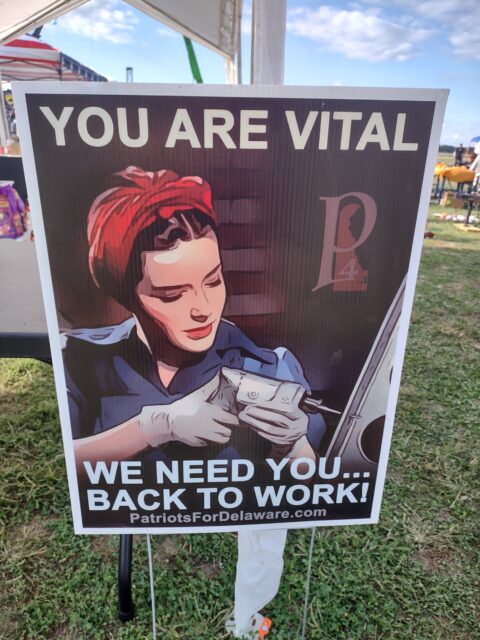I think you know the drill by now…more items (generally) from my e-mail that pique my interest enough to devote anywhere from a few sentences to a few paragraphs to them. Ready? Let’s go!
Why grifters matter
While I used to love the idea and concept of the TEA Party Express, somewhere along the line they went from being a help to the cause to a hindrance that leeches up valuable resources better suited for local and state races where people can make an impact.
That was the case with a recent e-mail that asked, “Ready to work your tail off to elect a bunch of bland, Democrat-lite Republicans in 2022? Me neither.”
The “me” in question is Sal Russo, a familiar operative with the TPX. And they are targeting three seats next year: Mark Kelly in Arizona, Raphael Warnock in Georgia, and Maggie Hassan in New Hampshire. Of the three, Hassan is the only one who has served a full term as the other two won special elections last year.
They were looking for $50,ooo, and I can picture how they will spend it: negative ads against the incumbents. Obviously it’s too soon to know which candidates will run in these primary races and perhaps they will get involved to try and tip the scales to, say, a Herschel Walker in Georgia. But as we found out over the last several cycles, the conservative flavor of the day today is the “bland, Democrat-lite Republican” a term or two down the road. Yet that $50,000 could help elect 15 or 20 local conservatives to local races where they can truly be the grassroots. Why fatten the pockets of political consultants?
Start the bus!
As you probably remember, the Tea Party Express made its name by running month-long bus tours across the country. Well, back in August the United Steelworkers did the same thing trying to get the Biden infrastructure bill passed.
This short little tour only lasted a few days and had stops in Indiana, Ohio, Virginia, North Carolina, and Pennsylvania – essentially places with steel manufacturing. But the fact I only heard about it because I’m still on the Alliance for American Manufacturing mailing list means that the union workers have been abandoned by Big Media and the Biden administration (but I repeat myself) as the wrong kind of Democrats.
Flooding the zone
And further speaking of political consultant groups, there are two that are sowing the seeds of destruction in Virginia.
According to this recent piece by the Capital Research Center, two far-left groups have somehow put together the scratch to send out 2 million vote-by-mail applications to selected Virginia voters. About 20 percent of them are destined for one county, Fairfax County. (That place is crazy-left and full of pencil-pushers, as I’ve found out in dealing with them over the last 18 months or so.)
The Voter Participation Center and Center for Voter Information are to blame for this. In the words of CRC’s Hayden Ludwig, “These groups use IRS rules permitting 501(c) nonprofits to engage in nonpartisan voter registration as a cloak for their blatantly partisan operations. VPC’s website proudly states that it wants to turn out more ‘young people, people of color and unmarried women’—a voting bloc that gave more than 60 percent of its votes for Biden in 2020 and contains 73 percent of all unregistered voters nationwide.” (Emphasis in original.) So it’s not just ANY voter to whom their message is intended or participation solicited.
Unfortunately, these are the electoral blocs most likely to vote against their own self-interest, in this case backing political hack and former Virginia governor Terry McAuliffe in his bid to return for a second bite of the apple to destroy that state once and for all. As Ludwig concludes, “Using nonprofits to conduct huge voter registration drives is only one component in the Left’s plan to effectively federalize future elections using vote by mail. This is the new norm in American politics, and sadly for democracy, it’s here to stay.” It is indeed here to stay, but if those on the side of common sense properly educate these voters as to better alternatives it doesn’t have to be that way.
Virginia is a bellwether state in the fact that it has its state elections in odd-numbered years. We knew the potential of a TEA Party wave in 2010 because both Virginia and New Jersey elected GOP governors in 2009, so the messaging is clear for 2022 based on November’s results. If the Democrats stuff the ballot box it makes it look like their agenda has broad support and discourages conservatives, or leads them to foolish investments as in the grifter case above.
Blowing away the windmills
In their haste to provide so-called “renewable” (read: expensive and unreliable) energy for the masses, the federal government is cutting corners and not telling the whole story. That’s the conclusion of David Stevenson, the Director of the Center for Energy & Environmental Policy, which is part of the Caesar Rodney Institute.
His piece, which conveniently also appeared at the Real Clear Energy website, details a litany of problems with offshore wind that are both environmental and practical. While environmentalists deny that viewshed is an issue during the day, the required lighting for navigation will certainly be seen from the shore at night. And the disruption to the ocean bottom is certainly on a scale with drilling for oil and natural gas, with far less payoff in terms of reliable energy. As Stevenson notes, “The lack of answers to so many critical questions is a direct result of BOEM releasing a ‘Final Environmental Impact Statement’ just nine days after accepting the developer’s permit request. BOEM has provided a target-rich arena for litigation.” That seems like a real rush job – imagine the howling if such a timetable was used for the Keystone XL pipeline.
I honestly believe both wind turbines and oil rigs can co-exist in the ocean, but if I can have only one give me the reliable solution.
She’s back in the running
Because I had this baked in the cake for awhile I figured it could be an “odds and ends” piece. Still, last week we learned that the Delaware GOP is closer to filling out its statewide ballot. It’s now official that 2020 gubernatorial candidate Julianne Murray is running to be the next Attorney General for the state of Delaware. (She even kept the same URL and just changed the content.)
One interesting tidbit in the Delaware Live story was that, “win or lose,” she will not run for governor in 2024, even though it would be an open seat as John Carney is term-limited. Unlike Lee Murphy, who never has seemed to find a political race he couldn’t run, Julianne must figure the only way she runs again is as an incumbent, and that makes sense from a professional and personal standpoint.
Since I don’t see a primary challenge for Julianne in the works, it’s likely she would take on current AG Kathy Jennings, a Democrat first elected in 2018 with 61% of the vote. The last Republican AG was current GOP party chair Jane Brady, first elected Attorney General in 1994 and serving two-plus terms before being succeeded by a Democrat appointee in 2005 when she became a judge. Since then there’s been a succession of Democrats in the office, most notably the late Joseph R. Biden III, best known as “Beau” Biden.
15 minute syndrome
There was a piece from Erick Erickson last week where he related:
The (Gabby Petito) story broke a week ago. It sailed past me until my sixteen-year-old daughter asked what I thought about it. I had no idea what she was talking about. My wife, the next day, came home from the gym to ask about it. A twenty-something young woman at her gym was talking about it. None of the women over thirty had heard about it.
Erick Erickson, “Regarding Gabby Petito,” September 23, 2021.
If it weren’t for social media, I wouldn’t have known about it either. Sadly, there are probably dozens of similar stories playing out every year but because Gabby Petito had more of a self-created social media following this caught peoples’ attention. Add in the fact that the prime suspect boyfriend is missing as well and now the story has legs.
It’s a case where your mileage may vary, but I grew up in a place and era with a daily big-city newspaper in our paper box that covered “important” local, national, and world news. A distilled version of that national and world content made the network news at 6:30 with Walter Cronkite (that was the station my parents watched) while a shorter version of the “important” local news and on-the-scene reporting was on the 6:00 local news. (For several years we only had two local newscasts; the then-ABC station finally started their local newscast when I was about 10.) The noon local news was more human interest stuff tailored to the stay-at-home moms along with a few headlines and weather and served as the bridge between game shows and soap operas.
We also had a couple very local newspapers that covered news in the rural county where I lived, and it was a BIG deal when I was in one of those papers for some academic achievement. My mom and dad probably still have a few of those clippings, so do I somewhere.
My point in bringing up this personal history is that our expectations of what is and isn’t news were completely changed by the 24/7 news cycle and the internet. And because people can now make and produce their own news content, like me writing on this blog, things like newspaper articles aren’t so treasured. Now if a child wins some honor the parental units plaster it all over their social media. (That may be how we first knew Gabby Petito.)
Bringing it back to Petito’s disappearance and eventual demise, it’s less likely a story like hers would have made the cut back in the era when we had 30 minutes of national news a day. Certainly it would be a sensation in her hometown, but those stories really had to have a hook to be aired on a wider scale.
Yet now we miss the forest for the trees – certainly her family deserves prayers for comfort in their loss and her boyfriend has some ‘splainin to do if he’s still alive and they ever catch up to him if he is, but is the Petito tale a story that has gravitas or impact in our lives? Or is it just a diversion brought forth by a media monster that inhales these stories as content so it doesn’t have to investigate real issues that affect a much larger audience than Petito’s family and social media circle?
I’m going to let you mull on that as I close out this edition of odds and ends.
































